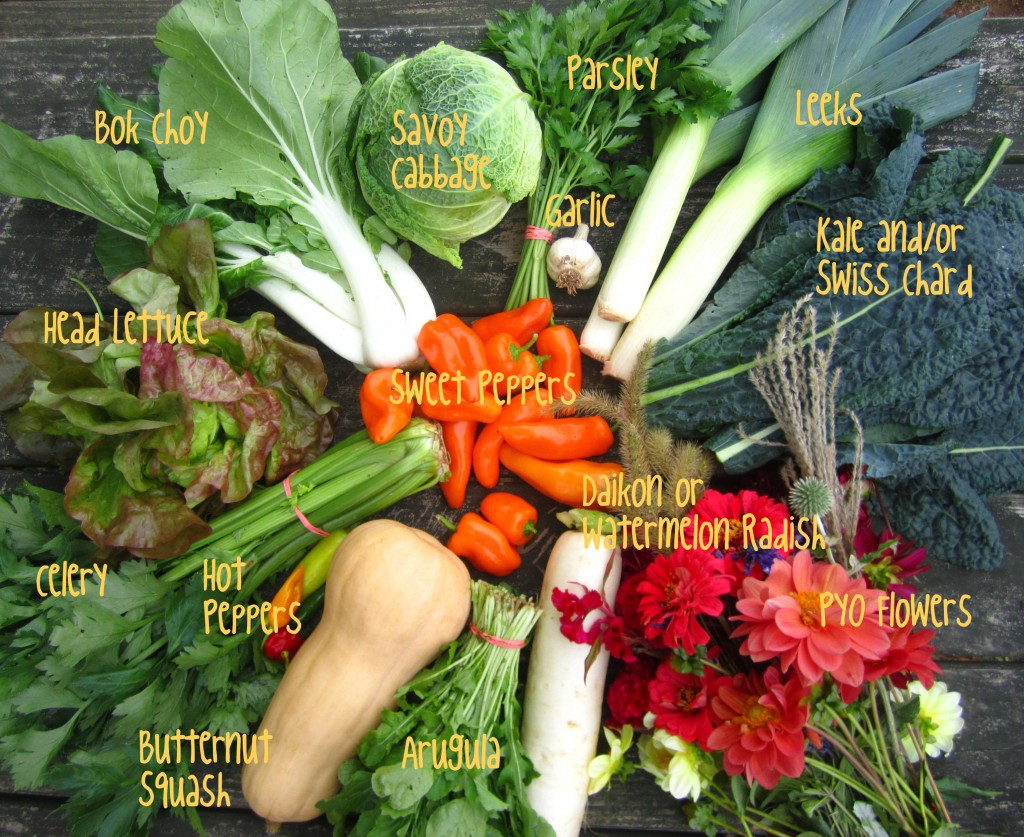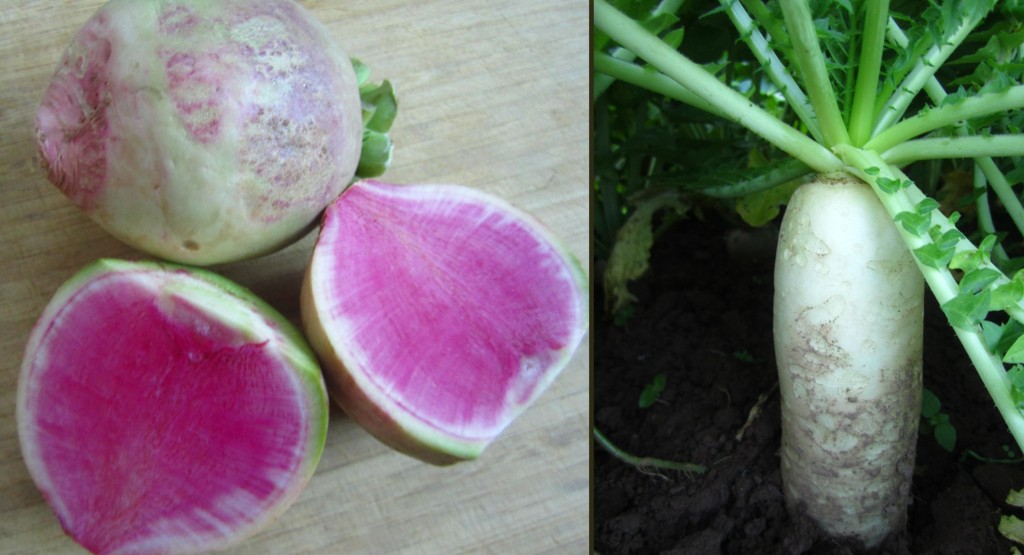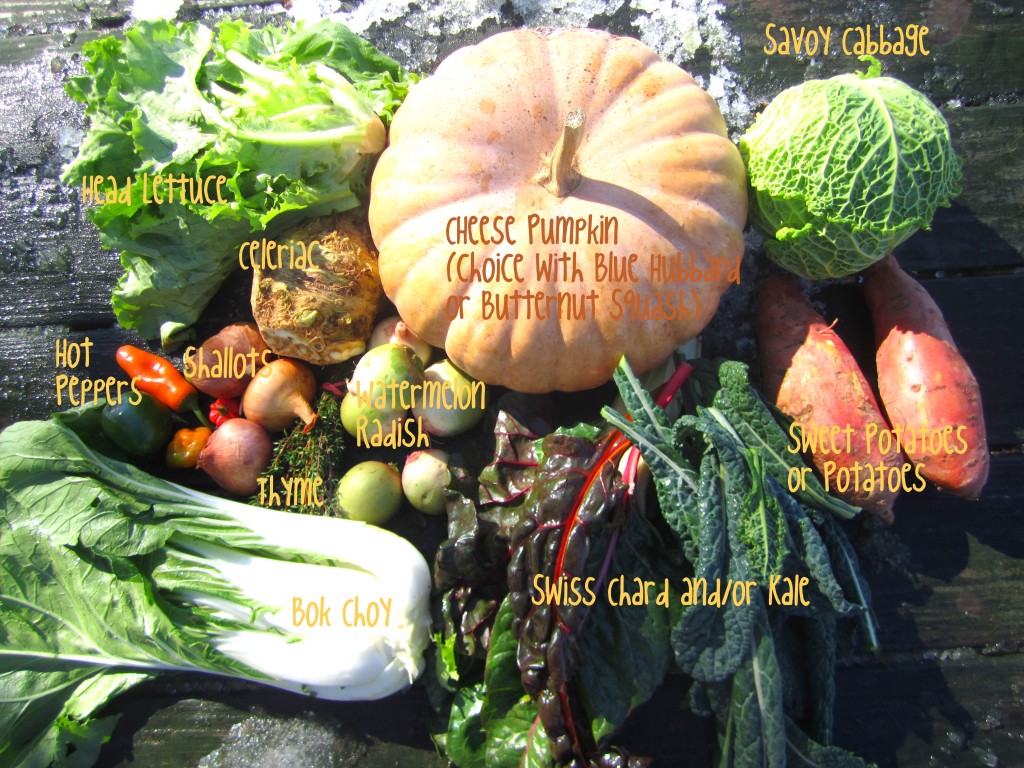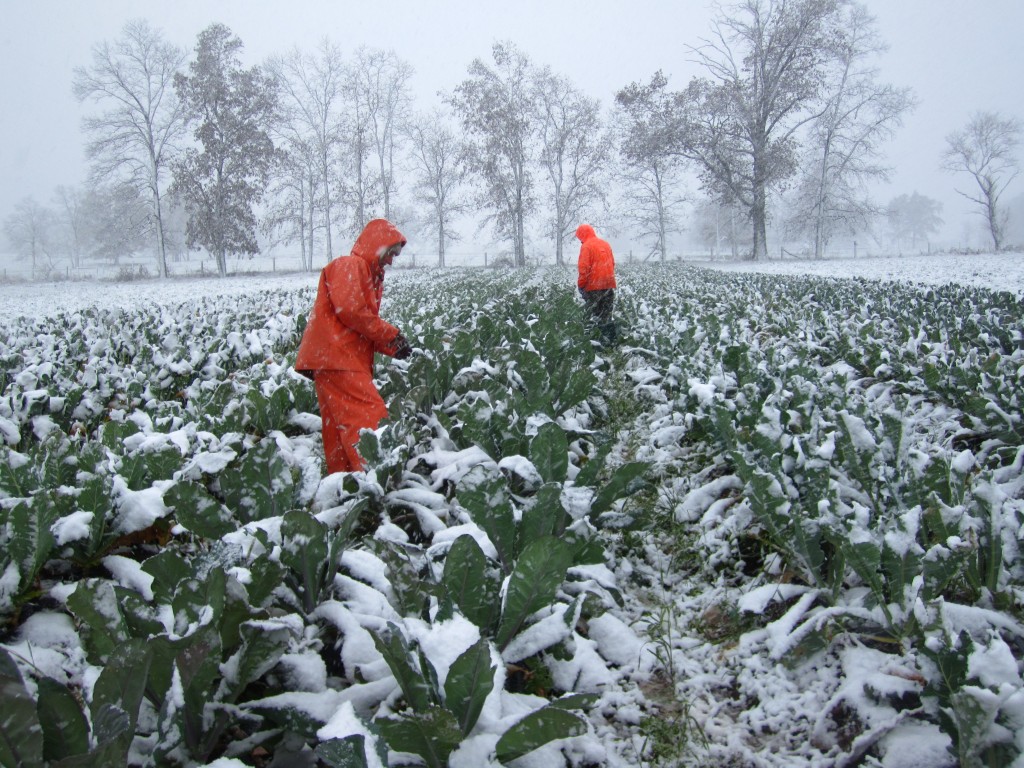10 Oct Share week 22: Fall Radishes
This week at the farm we are gearing up for our harvest festival. We are very excited that local bluegrass band Goose Creek Pioneers will be joining us this year. They will be performing on and off from 2-5 pm this Saturday October 13th. We will also have a drum circle with Valerie Hopkins, Professional Musician and Rhythm Facilitator, of Drum Circles Heal. Join us for crafts, relay races, garlic seed splitting, a wagon ride and more! The Coffee Scoop, Bucks County Cookie Company and Owowcow Creamery will be selling their treats and hot coffee. And, drumroll, you asked and they’re here! Blooming Glen Farm t-shirts, printed by Green Changes on gorgeous organic cotton, and designed by CSA member Chris Caruso, will be for sale!!
For $1 you can participate in tasting (and voting on) all the fabulous pies in our pie bake-off contest. During dinner the winner will be presented with the “pie” trophy (a beautiful piece of ceramic artwork by tile artist Katia McGuirk), to be kept for one year, then passed on to next year’s winner! It’s not too late to enter a pie- just shoot us an email! Potluck dinner will be around 5 pm (bring a dish to share, and your own place settings and beverage). CSA members and musicians Cliff Cole and Brian Pearson will entertain us with their musical talents during dinner. See you this Saturday at 2pm!
Fall radishes are here, in the share and at our market stands. The long white daikon radish is an Asian staple: its name is Japanese for “great root”, and it’s no wonder when they can reach lengths up to 3 feet long. Daikons are said to aid the digestion of fatty foods and can be eaten raw- grated or in fine matchsticks. The daikon radish can also be used as you would a turnip, in stews and soups where they provide a bright, refreshing note. They can also be stir-fried, pickled, baked or simmered.
The watermelon radish is round and and could easily be mistaken for a turnip, but when sliced open it looks just like a watermelon with a green rind and a bright rosy-pink interior. It’s a bit milder and sweeter than regular radishes, and much larger. Though they can be braised, roasted or mashed, I think they are best enjoyed raw, for in its natural state you can trully appreciate it’s stunning pink color and flavor. Slice them up and enjoy with your favorite dip, or grate them into a salad (peel off the tough outer skin first).
Photos and text by Tricia Borneman, Blooming Glen farmer and co-owner.








